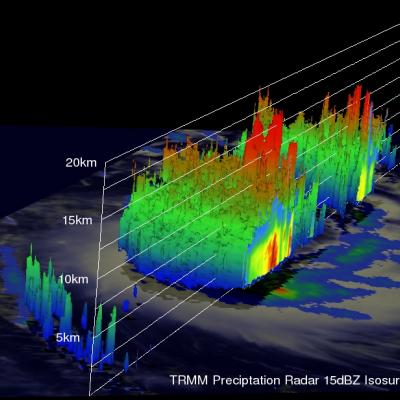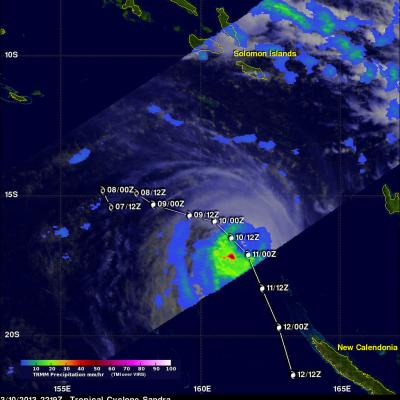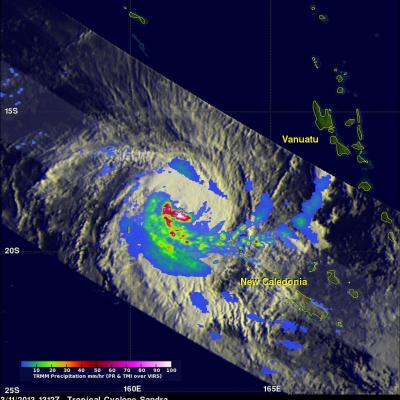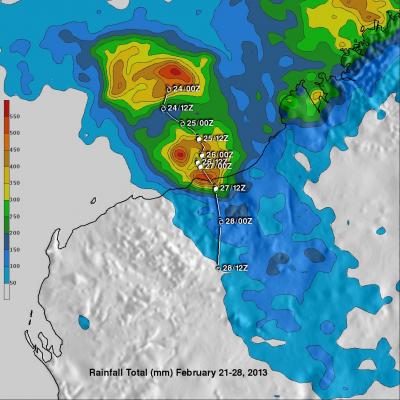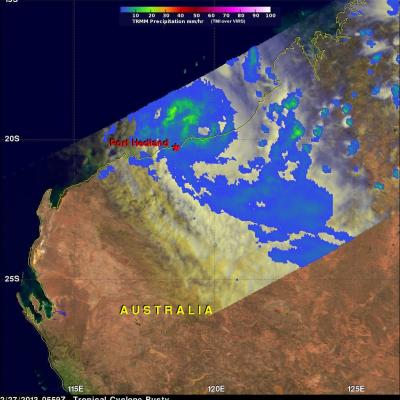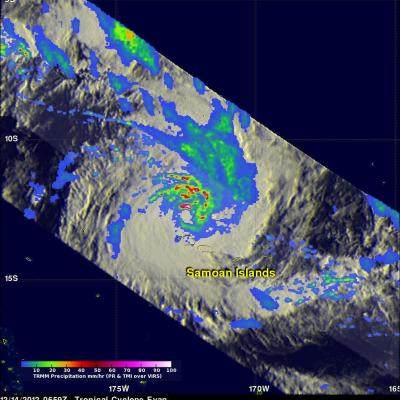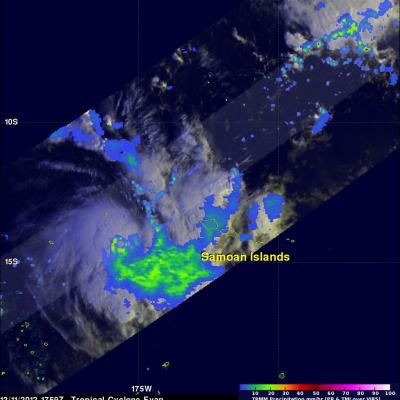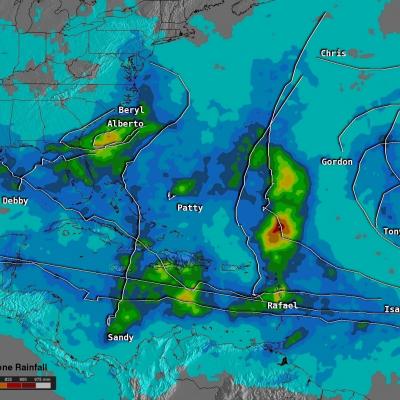TRMM Sees Tropical Cyclone Imelda
The TRMM satellite flew directly over an intensifying tropical cyclone called Imelda in the South Indian Ocean on April 8, 2013 at 0447 UTC. This rainfall analysis used data collected with TRMM's Microwave Imager (TMI) and Precipitation Radar (PR) instruments. This analysis shows a large area of rainfall on the western side of the developing tropical cyclone. TRMM PR found that some powerful convective storms in this area were dropping rain a rate of over 86mm/hr (~3.4 inches).


